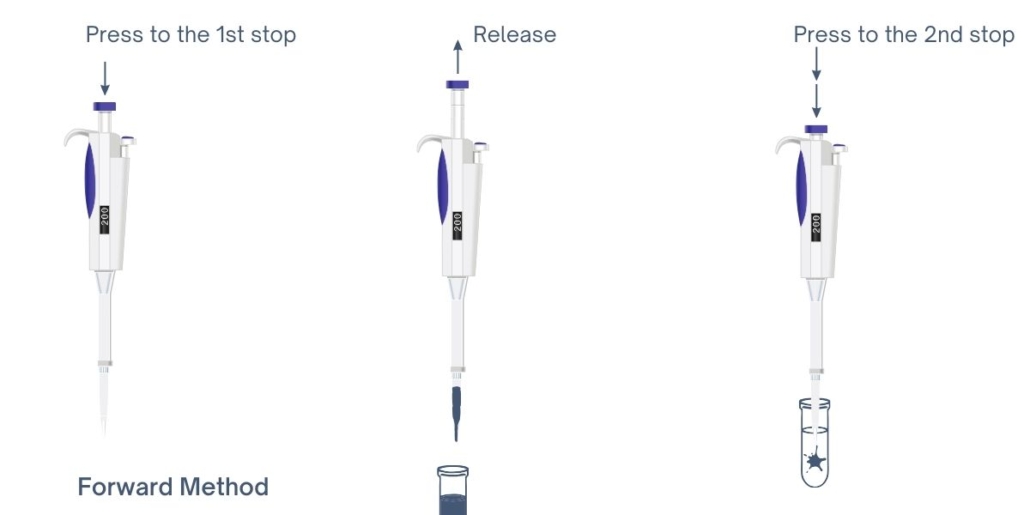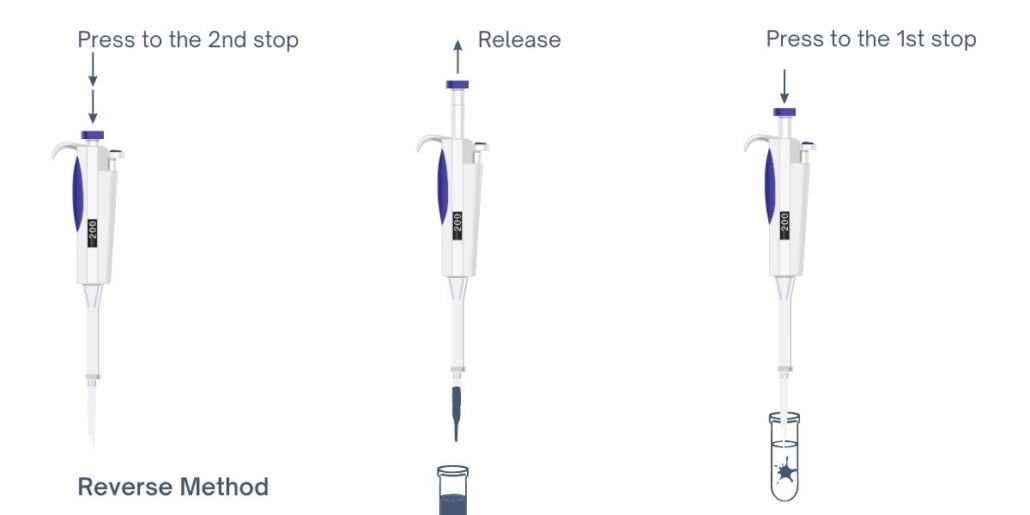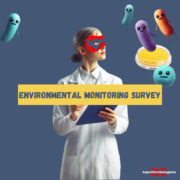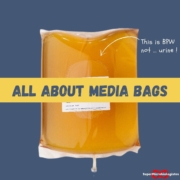Microbiology: What is reverse pipetting?
In microbiology labs, air-cushion pipettes are the most commonly used.
With this type of pipette, there are two pipetting techniques:
- Forward pipetting.
- Reverse pipetting.
Although reverse pipetting has many advantages, it’s still not widely known.
In this article, we will (try to) explain what the reverse pipetting method is all about.
What is forward pipetting?
In microbiology labs, when using an air-cushion micropipette, almost everyone uses the forward pipetting method—often without even realizing it!

This forward pipetting method involves:
- Pressing the plunger button to the first stop.
- Immersing the pipette tip into the liquid.
- Fully releasing the plunger.
- Dispensing the liquid by pressing the plunger down to the second stop.
This is the classic method we all learned in “school,” and it works perfectly for aqueous liquid matrices.
What is reverse pipetting?
Reverse pipetting is… the opposite!

The reverse pipetting method involves:
- Pressing the plunger button down to the second stop.
- Immersing the pipette tip into the liquid.
- Fully releasing the plunger.
- Dispensing the liquid by pressing the plunger down to the first stop.
With the reverse method, you draw up slightly more liquid than needed and dispense only the required amount.
Important: When using reverse pipetting, do not press the plunger all the way to the second stop during dispensing, or you’ll end up dispensing more liquid than intended!
What are the advantages of reverse pipetting?
Reverse pipetting improves accuracy when working with non-aqueous matrices, such as foaming, viscous (e.g., glycerin), or volatile substances (e.g., ethanol).
- For volatile matrices, it helps reduce evaporation in the pipette tip.
- For viscous and foaming matrices, it minimizes the formation of air bubbles during dispensing. With forward pipetting, pressing down to the second stop tends to release air, which doesn’t happen with the reverse method.
Important: Just because you’re using reverse pipetting doesn’t mean you can go full speed ahead! For these types of matrices, slow and steady wins the race.
If even with the reverse pipetting method you’re struggling to achieve precision, you’ll need to switch to a positive displacement pipette.
Conclusion
As we’ve just seen, the reverse method has many advantages, especially when working with “challenging” matrices.
It also has one undeniable benefit that will make your finance manager happy… it doesn’t require any additional investment!










Leave a Reply
Want to join the discussion?Feel free to contribute!